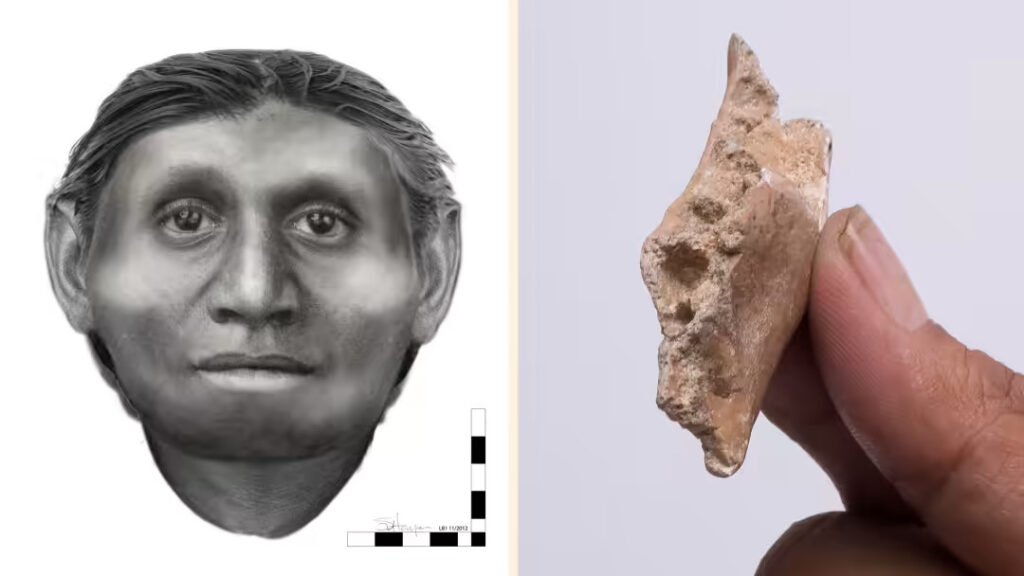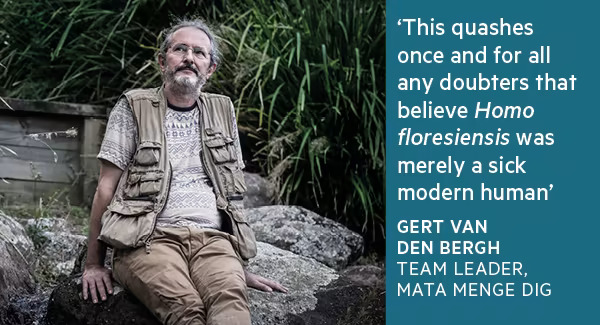Indonesia discovers 700,000-year-old ‘hobbit’ fossils

Dwarf “hobbits” lived on the Indonesian island of Flores for hundreds of thousands of years, according to evidence from newly excavated hominin fossils. An international research team, following up on the original hobbit discovery that drew international attention in 2004, has discovered a fossilized diminutive jaw bone and six small teeth from an adult and two children that they believe are 700,000 years old.
The scientists believe that the new finds, described in the journal Nature, represent ancestors of the hominin species Homo floresiensis, whose remains were discovered in 2004 and date back to around 55,000 years ago.
“The fossils . . . appear to be remarkably similar to those of Homo floresiensis,” said Yousuke Kaifu of Tokyo’s National Museum of Nature and Science, who led their dating and identification. “What is truly unexpected is that . . . Homo floresiensis had already obtained its small size by at least 700,000 years ago.”
The original discovery led to a debate between paleontologists who proposed that the fossils represented nothing more than a modern human with pathological dwarfism and those who favored a previously unknown hominin species.
“This find has important implications for our understanding of early human dispersal and evolution in the region — and quashes once and for all any doubters that believe Homo floresiensis was merely a sick modern human (Homo sapiens),” said Gert van den Bergh from Wollongong university in Australia, who led the archaeological team that excavated the jaw fragment and teeth from layers of sedimentary rock at Mata Menge on Flores.
Aida Gómez-Robles, a paleontologist at George Washington University in the US who was not part of the Flores team, agreed: “The current findings . . . confirm beyond any reasonable doubt that Homo floresiensis is a distinct hominin species with deep evolutionary roots.”
The discovery site is 70km from the Liang Bua cave where the original hobbit remains were found. The team chose to dig into the fossil-rich sandstone at Mata Menge because hundreds of thousands of years ago it was the site of a stream running through open grassland with some trees — the sort of place ancient hominins liked to live. Simple stone tools had already been found nearby.

The big evolutionary questions are when the hobbit ancestors originally reached Flores and why they became so much smaller than any other known hominins.
The oldest signs of human habitation on the island are stone tools from about 1m years ago, believed to have been left by Homo erectus, a hominin species then moving through southeast Asia by land.
Mr van den Bergh believes some individuals reached Flores accidentally — perhaps swept out to sea by a tsunami and drifting on debris — because there is no archaeological evidence for boatbuilding so long ago.
Isolated island populations of other animals are often subject to evolutionary dwarfing. Flores itself was home to two now-extinct species of pygmy elephants. If the founding population was indeed Homo erectus, then its stature would have decreased by about one-third (to around one meter tall) and its brain size shrunk by half within 300,000 years.

An alternative explanation is that a smaller and older species of hominin such as Homo habilis reached Flores more than 1m years ago and underwent a slower dwarfing process.
The researchers say this is less likely because there is no evidence for the presence of hominins in what is now Indonesia so long ago.
The mystery can only be solved by the discovery of more complete skeletal remains of ancestral hobbits — including limbs and skulls — on Flores through more intensive excavation work.
